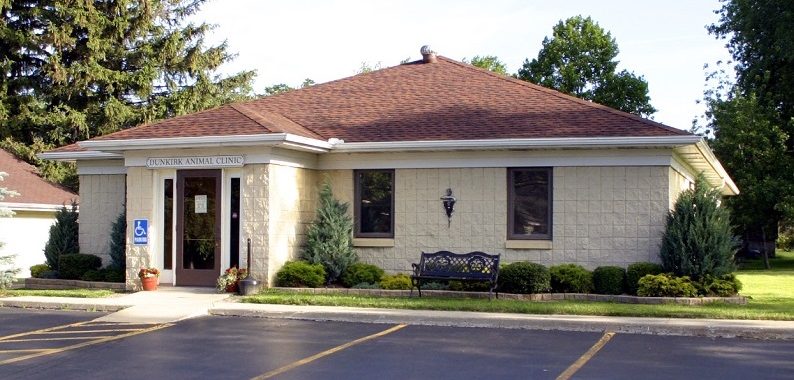Veterinary spinal manipulative therapy — animal chiropractic
By Justine Gugino  
Many people see a chiropractor when experiencing back pain, headaches or even when they want to maintain general wellness. However, have you considered that your pet could benefit from spinal adjustments as well? During my studies, I began to wonder; if my spinal health and general well-being could be impacted so greatly by seeing a chiropractor, could I learn this skill to help my canine patients?
So you may be thinking what is the science of chiropractic?
Animal chiropractic (veterinary spinal manipulative therapy) focuses on the preservation and health/wellness of the neuro-musculo-skeletal system. Chiropractic is the science that is centered around the relationship between the spine and the nervous system. The spine is your body’s foundation and the nervous system, including your brain, spinal cord and nerves, controls your entire body. They must work together harmoniously to improve one’s general health and their ability heal. If the systems are not functioning to their highest potential you may experience changes in digestion, heart and lung function, reproduction and most evidently musculature. When adjacent joints are in an abnormal position, called a subluxation, the nervous system and all that it controls will be negatively impacted. If these subluxations are not corrected, they can result in prolonged inappropriate stimulation of nerves. This could result in reduced function internally, musculo-skeletal dysfunction and pain.
What is spinal manipulation?
Spinal manipulation is the art of restoring full and pain free range of motion to joints and can greatly benefit an animal after they have experienced subluxations. The veterinarian will use their hands to palpate joints both statically and in motion. By doing this, they can determine where the animal is experiencing decreased motion or misaligned joints. Once identified, an adjustment can be performed. An adjustment or spinal manipulation is a gentle, specific, quick and low force thrust that will be applied at an angle specific to the different areas of motion in the spine and extremities. Only a certified animal chiropractor will understand the complexity involved in adjustments and can best assess if an animal can benefit from chiropractic care.
How do you know if your furry friend needs spinal therapy?
Many animals can benefit from this alternative therapy. If you notice that your animal has a particularly sensitive spot somewhere on their body, is walking or trotting differently and or not performing to the same ability they have previously, they may be a candidate for a chiropractic assessment. However, an animal does not need to be sick or injured to benefit from chiropractic care. Animals in good health or ones used for sporting activities are also prime candidates for chiropractic care. By maintaining your pet’s proper spinal alignment and mobility they will attain optimal function of muscles, nerves and tissues that support the joints. When the body can move freely your pet will experience improved mobility, stance and flexibility, which can evolve into improved agility, endurance and overall performance. Finally, many people have never considered that chiropractic care can also benefit their animal by boosting their immune response. It can aid in providing a healthier metabolism and a vibrant nervous system which all facilitate your animal’s natural ability to heal themselves from within. Chiropractic care can enhance the quality of your pet’s life ensuring many active and healthy years to come.
How did I get into veterinary spinal manipulative therapy?
Anyone who knows me knows that I struggled with back pain as a teenager and all throughout my schooling. It wasn’t until I met my chiropractor that I began to experience all the benefits of this therapy, most importantly having a pain-free back. Being pain free should not be a luxury, it should be the standard. After many years of riding horses and seeing what it took for them perform at the highest level, I began to understand that both small and large animals could benefit from this therapy. So, during veterinary school I began the process of researching how to become an animal chiropractor or veterinary spinal manipulative therapist. As I researched further, I noticed that this specialized profession has grown. It became apparent that one should be certified by either the College of Animal Chiropractors or American Veterinary Chiropractic Association to practice on animals. An owner should be diligent about finding a certified and respectable practitioner to work on their animal. It was surprising to find out that there are only four programs in the USA and Canada that are approved by both organizations. The courses consisted of over 200 hours of intensive study and hands on learning followed by certification testing. After much consideration, I applied to the Veterinary Chiropractic Learning Center and after five months of study I became certified by the College of Animal Chiropractors. I am very excited to be bringing this skill back to WNY.
Chiropractic care is coming soon to the Dunkirk Animal Clinic; if you are interested in finding out whether your pet could benefit from chiropractic care, keep a look out for the arrival of these services.
This article was written by Justine Gugino. She will be graduating from the Ontario Veterinary College at the University of Guelph in June. Justine will be joining the staff of the Dunkirk Animal Clinic at this time as an associate veterinarian. She has a strong interest in wellness, internal and alternative medicine. She is working on an old farm house in Eden with her boyfriend Matt and her Am Staff puppy Watson. She enjoys working outside, skiing, horseback riding and spending time with family.


